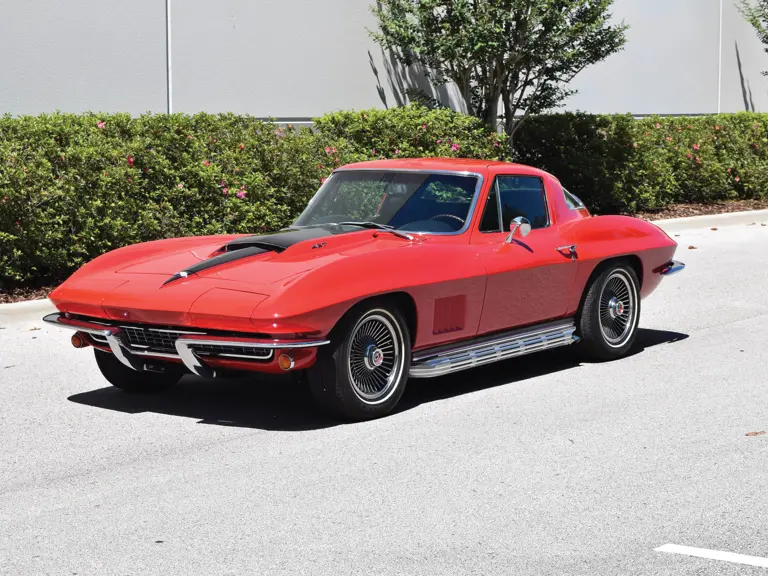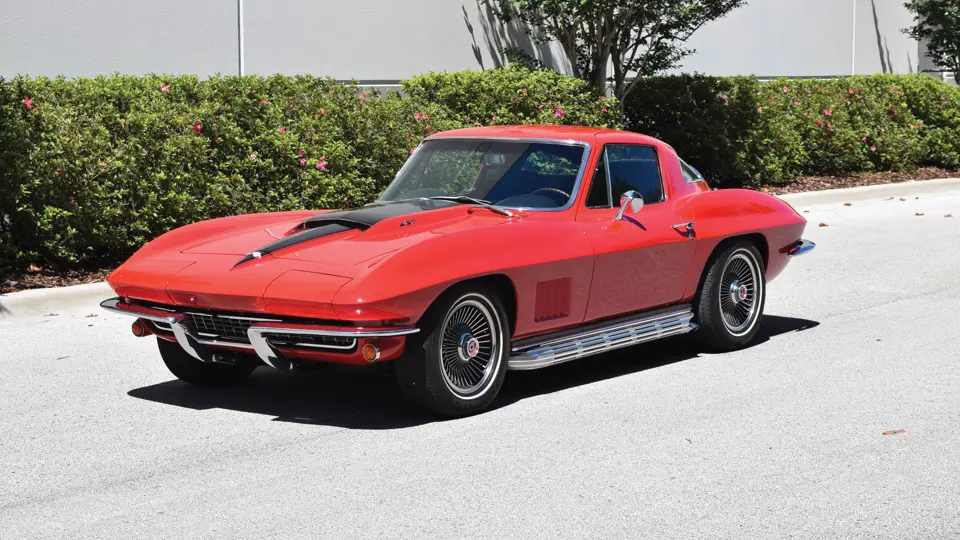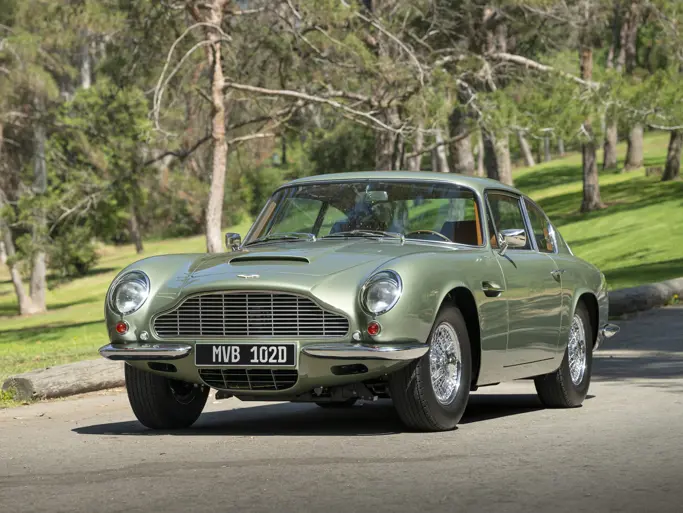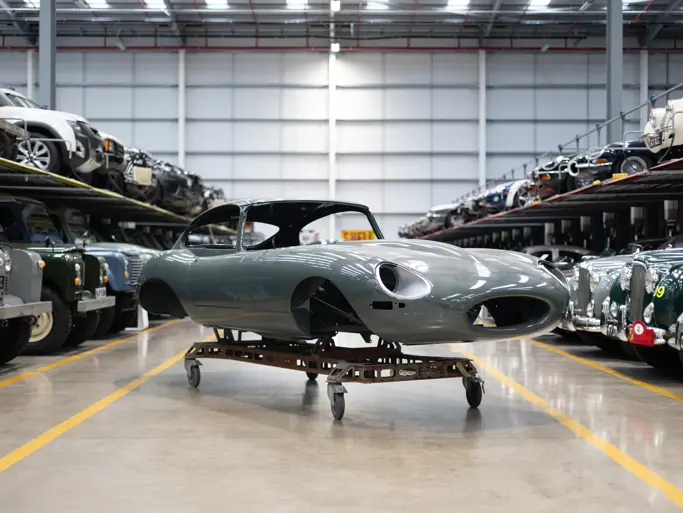As part of the ongoing development of the Corvette; for 1965, Chevrolet added the big-block “Mark IV” engine to the Corvette options list, a 396 cubic inch version rated at 425-hp. For 1966, the big-block became a 427, offered in two stages of tune: 390- or 425-hp. With the 427 came the new “power bulge” hood. Big-block cars had stiffer suspension, a heavy-duty clutch and a better cooling system. Acceleration was phenomenal: zero-to-sixty in less than five seconds.
In 1967, the year of this beautiful car, there were four versions of the 427 available in Corvettes. The “entry level” big-block was option L36, a single four-barrel edition making 390-hp. The L68 had three two-barrel carburetors and developed 400-hp, and is the powerplant in this car. Option L71 also had Tri-power, but with four-bolt main bearings, big-valve heads and a hot cam for 435-hp. At the top of the class was the famed L88, with aluminum heads, a Holley four-barrel and solid lifters and was well-known as a competition special with neither radio nor heater with only 20 were built.
Finished in Rally Red with a black hood stinger and black leather interior; this car has the L68 Tri-power engine with a four-speed manual transmission – the drivetrain is reported as correct for the car. Desirably equipped with factory air conditioning, it also has headrests, side exhaust, tinted glass, AM/FM radio, telescopic steering wheel, bolt-on aluminum wheels, whitewall tires; power steering and four-wheel disc brakes. In 1967 Chevrolet built 22,940 Corvettes; 8,504 coupes and 14,436 convertibles. Of this number; it is reported that 2,101 left the factory with the coveted L68 Tri-power V-8 engine.



 | Auburn, Indiana
| Auburn, Indiana


